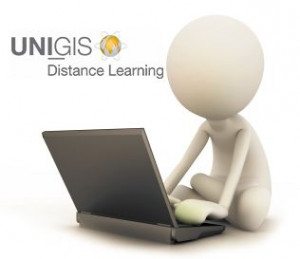 Starting from May, we are looking forward to an exciting roster of outstanding speakers on a range of topics covering themes of current interest for UNIGIS alumni, students, and everyone else. The open u_Lecture webinar series offers a LifeLongLearning opportunity to graduates and everyone keen to follow developments across the exciting field of Geoinformatics. See below for details on upcoming talks, and preview further speakers we keenly anticipate this term:
Starting from May, we are looking forward to an exciting roster of outstanding speakers on a range of topics covering themes of current interest for UNIGIS alumni, students, and everyone else. The open u_Lecture webinar series offers a LifeLongLearning opportunity to graduates and everyone keen to follow developments across the exciting field of Geoinformatics. See below for details on upcoming talks, and preview further speakers we keenly anticipate this term:
>> Make sure you mark your calendars not to miss these unique opportunities to learn from and interact with these outstanding individuals!
>> You can watch the recording of past u_Lecture webinars here > UIA webinar channel
July 17, 3:30 pm CEST > Register here
> Pablo Martínez (arquitecto por la Escuela Técnica Superior de Arquitectura de Barcelona (UPC): New cartographies for urban planning
This u_Lecture will be held in Spanish language!
For many years, urban planning has counted on cartographies of the topography and the parcelling of urban environments as the unique descriptive basic tool. However, since the emergence of massive data generation from mobile devices, sensors or the increasing digitization of the administration, we have multiple representations of our environment at our disposal that suggest new limits to be reached by urban planning.
This new scenario is possible thanks to the tools with which we operate and the possibilities they offer us to imagine new futures.
Objective: Show applied use cases of different technologies that allow us to evaluate their potential and application results such as Qgis, OpenLayers, Postgresql, Spatialite.
Bio: Pablo Martínez is architect at the Barcelona School of Architecture (ETSAB-UPC). He has a broad experience in use of data applied to urban planning.
Founded in 2004 together with Mar Santamaría, the urban planning studio 300.000km/s specialized in the analysis and visualization of massive data as a key tool for the redefinition of urbanism. His projects and essays has been published in ‘Mas Context‘, A+1, Landscape Frontiers and Wired and City Lab, and presented to the Art Institute of Chicago (‘Chatter: Architecture Talks Back’), the CCCB (Centre de Cultura Contemporània de Barcelona), The Museum of the History of Barcelona (MUHBA) and the Biennale of Venecia’16. One of the most recent projects is the Atlas de la Turistificación, Morfologías del turismo y Arturo (Atlas of the Touristification, Morphologies of tourism and Arturo), an algorithm trained by citizens to design more livable cities.
June 11, 5:00 pm CEST > Register here for recording
> Dr Iestyn Barr (Senior Lecturer, School of Science and the Environment, Manchester Metropolitan University): Remote sensing of glacier-clad volcanoes
Interactions between volcanoes and glaciers result in some most destructive natural hazards on Earth. Notable examples include the 1985 eruption of Nevado del Ruiz (Colombia), which killed more than 23,000 people; and the 2010 eruption of Eyjafjallajökull (Iceland), which caused the complete closure of European airspace. The best way to minimise and prepare for these impacts is to directly monitor volcanoes, and make early predictions of imminent activity. Unfortunately, because of costs and logistical challenges, most volcanoes are not directly and continuously monitored, making eruptions notoriously difficult to predict, and leaving us susceptible to unexpected eruptions. Fortunately, remote sensing is opening up possibilities for monitoring glacier-clad volcanoes at a global scale. This presentation will discuss recent, and possible future, developments in this area.
Bio: Dr Iestyn Barr is Senior Lecturer at the School of Science and the Environment, Manchester Metropolitan University. His research expertise lies in the application of remote sensing, GIS, and modelling techniques in mountain and high-latitude environments with particular interest in the interactions of glaciers and volcanoes.
May 09, 3:30 pm CET > Register here for recording
> Wladimir Szczerban (IT engineer, ICGC): From WMS to Vector Tiles
This u_Lecture will be held in Spanish language!
WMS is probably the most used OGC standard. Its first version is from the year 2000, nowadays it is still used a lot and that is why it is important to know in depth its functionalities and limitations, as well as its advantages and disadvantages.
We must bear in mind that in 19 years the technology changed a lot and it may be time to look ahead and “abandon” the WMS. During these years various solutions have emerged such as WFS, UTFGrid, raster tiles and finally vector tiles.
The main objective of this webinar will be, to learn in detail about the main use of WMS (advantages and disadvantages) and get to know why vector tiles are a good candidate to replace WMS.
Bio: Wladimir Szczerban is an IT engineer focusing mainly on Geographic Information Systems. He works at the Institut Cartogràfic i Geològic de Catalunya (ICGC) since 2005, developing web-mapping software (8 years in the Spatial Data Infrastructure of Catalonia and 5 years in the Geostart group).
Interested in open software, open data and geotechnologies, OpenStreetMap collaborator and member of Geoinquiets.
More information on upcoming talks will be published soon!
